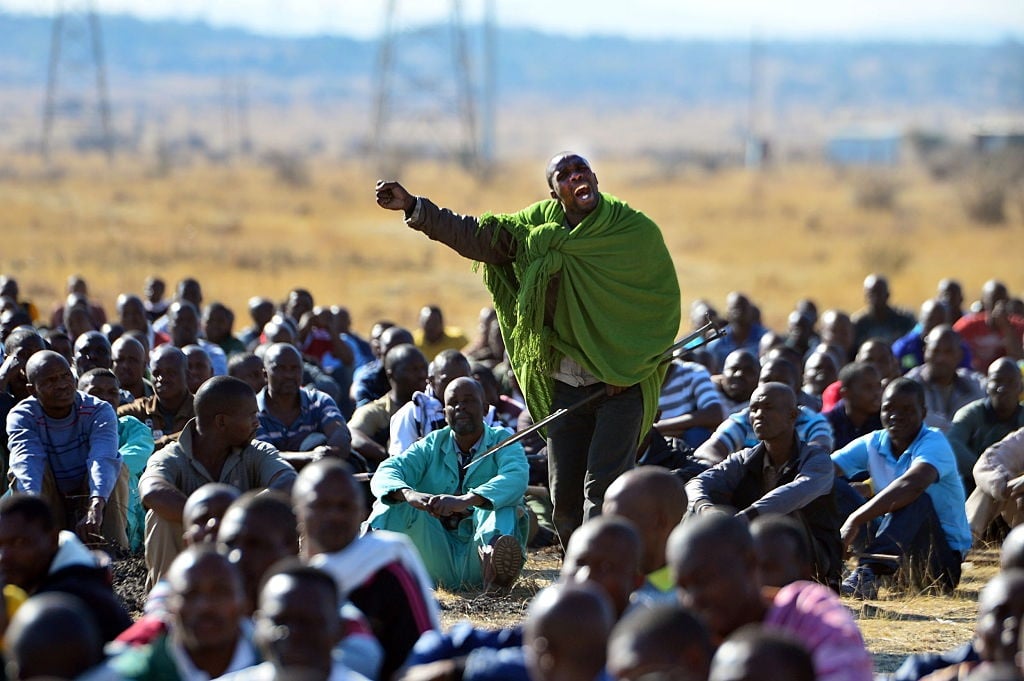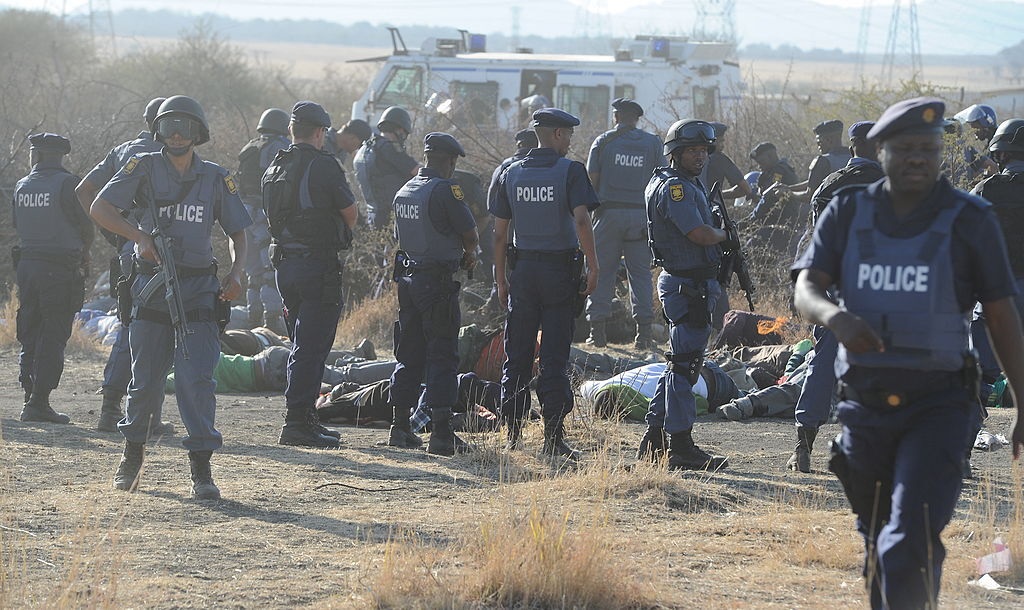
- Former North West deputy police commissioner William Mpembe is charged with murder and attempted murder following events that happened at Lonmin K3 shaft in Marikana on 13 August, three days before the massacre.
- Five people were killed after a stand-off between police officers and striking miners.
- The trial is expected to continue until 28 May.
Could it be that tear gas and stun grenades fired by the police at striking Marikana miners on 13 August 2012 caused the chaos that resulted in deaths and injuries, or did the police act because they were being attacked?
These are some of the questions the North West High Court may be confronted with as the trial against former provincial deputy police commissioner William Mpembe and five other officers continues.
Mpembe faces four counts of murder and five of attempted murder.
He is charged alongside former colleagues retired Colonel Salmon Vermaak and Constable Nkosana Mguye as well as warrant officers Collin Mogale, Joseph Sekgwetla and Khazamola Makhubela before Judge Tebogo Djaje.
The former deputy police commissioner and Vermaak are also charged with defeating the ends of justice and giving false information under oath before the Farlam Commission of Inquiry into the Marikana massacre between 2013 and 2014.
The clash on 13 August 2012 claimed the lives of workers Semi Jokansi, Phumzile Sokhanyile, and Thembelakhe Mati as well as police officers Hendrick Monene and Sello Lepaaku.
The trial resumed last week and is expected to continue until 28 May.
Police officers, who were called by the State, have been in the witness stand to give their recollection of events at Lonmin K3 shaft on that day.
Sergeant Benjamin Mahume was the latest witness, telling the court how he ended up at the mine, what he found and the commands that Mpembe gave on the day.
Mahume's testimony followed that of Lieutenant-Colonel Jeremiah Mohlaki and Warrant Officer Daniel Pieter Kuhn who testified last week.
While Mohlaki's evidence was about him being instructed to deliver exhibits collected from the scene to a lab in Pretoria, Kuhn and Mahume's focused on what happened after the miners gathered at a railway line before pandemonium broke out.
Kuhn was attached to Public Order Policing (POP) in Springs, Gauteng, and Mahume in Rustenburg.
What happened afterward?
Kuhn and Mahume testified Mpembe addressed the miners at a railway line, and after some time, they started moving away and was escorted by the police.
During his cross-examination by defence lawyer, advocate Jan Ellis, Mahume said chaos erupted when tear gas and stun grenades were fired at the miners who were moving to an open field.
He told the court the directive for the firing of tear gas and stun grenades came from Mpembe.
Last week, the court played video footage showing the miners walking on the open field. As they moved at a slow pace, a Nyala emerges in front of them.
Soon after, a tear gas canister is shot into the crowd.
Kuhn testified he fired the first tear gas canister.
This when the crowd started dispersing, and soon after, police officers also threw stun grenades at the miners.
Mahume testified the crowd was singing at the time.Did police officers shoot mineworkers after they were attacked at Lonmin K3 shaft in Marikana on 13 August 2012? The testimony of a police officer in the North West High Court in Mahikeng gave a sense that this may have been the case. | @Sesona_Ngqaks https://t.co/WJtK6UFjTE
— News24 (@News24) May 14, 2021
Was the crowd running or walking?
During his lengthy cross-examination, which is now on day three, Ellis ask Mahume whether the crowd was "walking fast or slowly".
Mahume said they were "walking fast" and jumping.
"Some miners were walking in the front, others from the back. Because they were a wide group, they were singing," he told the court.
The State's case is the police indiscriminately shot at the striking miners who were on their way to gather at a koppie.
But as they moved to it, they walked in the direction of an informal settlement, which was the moment when Mpembe instructed they should be stopped.
The defence's line of questioning, particularly that of Mpembe's lawyer, suggested pandemonium broke out because the group was volatile and armed.
Mpembe has been the focal point of Kuhn and Mahume's testimony.
But according to Mahume's testimony, the miners only attacked after the first tear gas canister was fired.
"There was also stun grenades thrown, and after that, two people [miners] came to me," he said.
Who was the officer being attacked when Mpembe instructed that police shoot?
Mahume testified he fired rubber bullets at miners who attempted to attack him, but when he saw he would be overpowered, he moved back toward his colleagues.
The police officer said as he moved away from the two miners, Mpembe said: "A police is being killed, shoot!"
According to Mahume's testimony, Lepaaku was at that moment being "chopped" by a panga.
He was emotional when he recalled the attack on Lepaaku.
Mahume testified the miners took what looked like an R5 rifle from Lepaaku.
They later brandished the weapon and it looked like they were celebrating, he told the court.
"I fired two shots at two people who were approaching me in self-defence.
"When General [Mpembe] said, 'A police is being killed, shoot!' I fired other shots. And when I looked, they were busy chopping the police officer [Lepaaku].
"I fired two [rubber bullet] shots, went back - and when I was moving back, and the general gave an order, I fired eight other shots."
Mahume added he started shooting rubber bullets, knowing they would not reach the two men who were attacking Lepaaku.
The court is also expected to hear the testimony of Lieutenant-Colonel Omphile Joseph Merafe who was the then-POP Rustenburg commander.
We know this was a long read and your time is precious. Did you know you can now listen to articles? Subscribe to News24 for access to this exciting feature and more.


